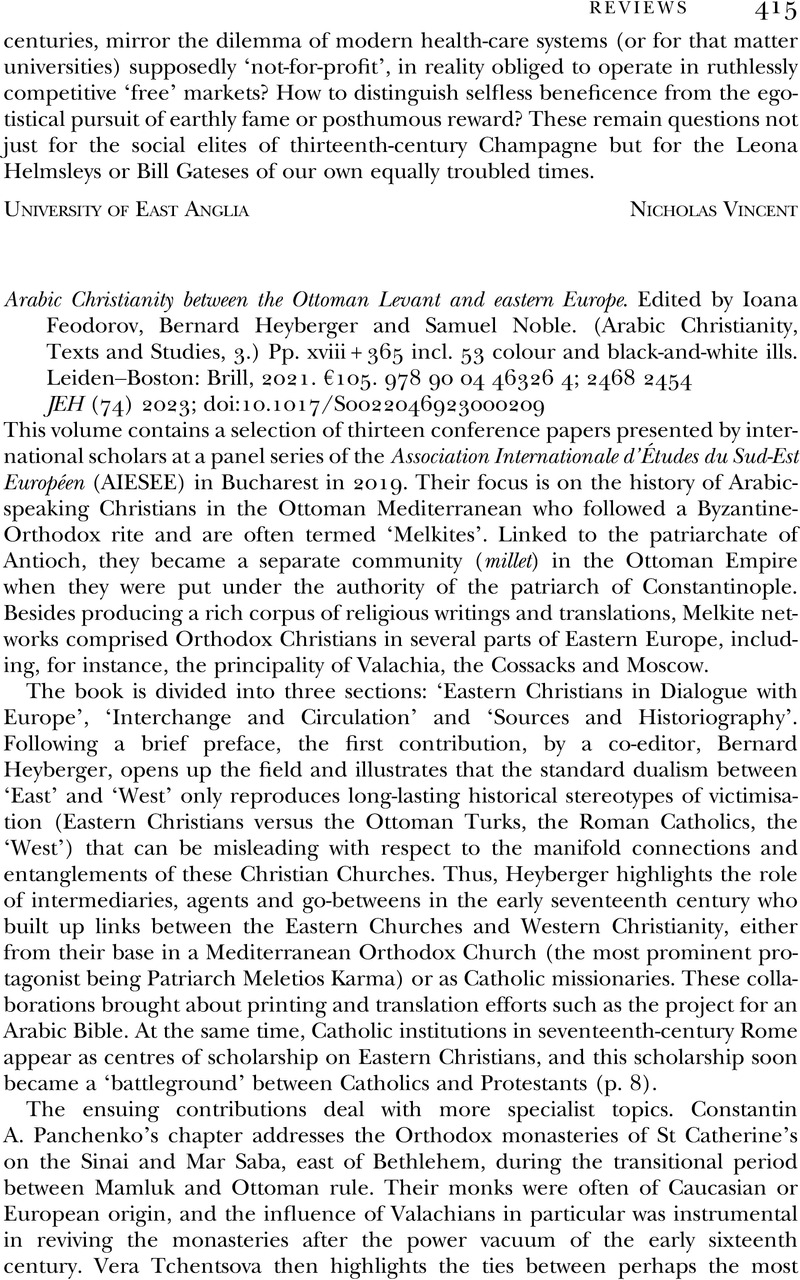No CrossRef data available.
Article contents
Arabic Christianity between the Ottoman Levant and eastern Europe. Edited by Ioana Feodorov, Bernard Heyberger and Samuel Noble. (Arabic Christianity, Texts and Studies, 3.) Pp. xviii + 365 incl. 53 colour and black-and-white ills. Leiden–Boston: Brill, 2021. €105. 978 90 04 46326 4; 2468 2454
Review products
Arabic Christianity between the Ottoman Levant and eastern Europe. Edited by Ioana Feodorov, Bernard Heyberger and Samuel Noble. (Arabic Christianity, Texts and Studies, 3.) Pp. xviii + 365 incl. 53 colour and black-and-white ills. Leiden–Boston: Brill, 2021. €105. 978 90 04 46326 4; 2468 2454
Published online by Cambridge University Press: 25 April 2023
Abstract
An abstract is not available for this content so a preview has been provided. Please use the Get access link above for information on how to access this content.

Information
- Type
- Reviews
- Information
- Copyright
- Copyright © Cambridge University Press 2023


